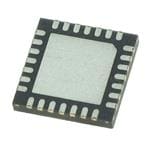CPAP stands for ” Continuous Positive Airway Pressure .” The CPAP is a very beneficial treatment for those with sleep apnea, which is a medical condition where the airway closes off when an affected individual is in a relaxed or sleep state. CPAP therapy holds the airway open so that uninterrupted breathing is maintained and a restful night’s sleep is achieved.
For the most effective results, the CPAP machine must be used nightly and, because the mask rests on the face, comfort is a vital concern. Advanced CPAP setups include humidifiers, heated hoses, and software. Design considerations include:
- A high-speed, low-power, highly-integrated microprocessor
- Pressure sensors that convert readings into a differential signal to help the microprocessor regulate the airflow output, preferably with signal conditioning amplifiers that have low offset voltage and low drift over time and temperature.
- Control of the DC motor by monitoring at least two of the three current phases, as well as the DC bus voltage feeding the motor drive bridge.





